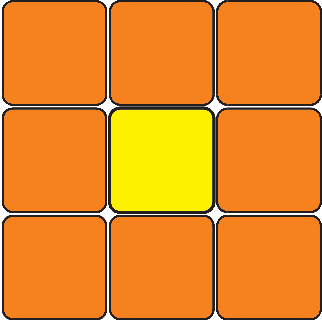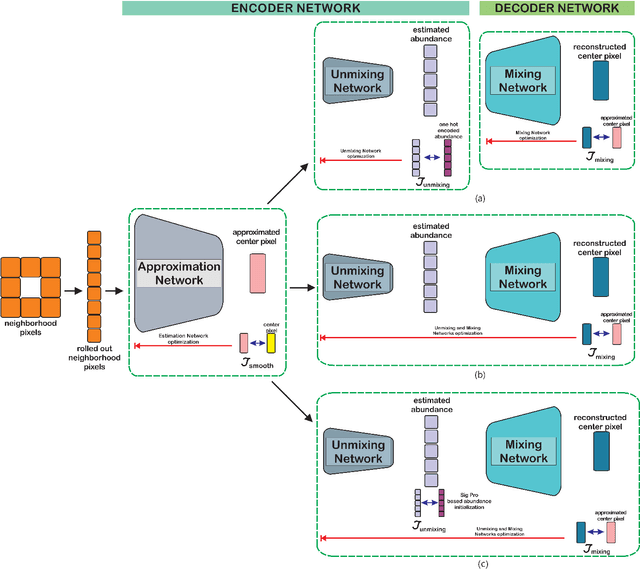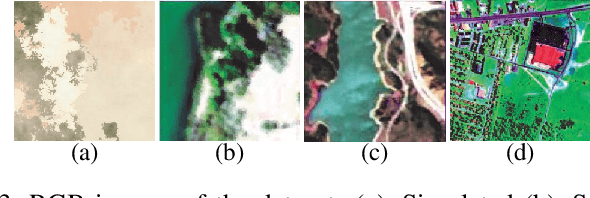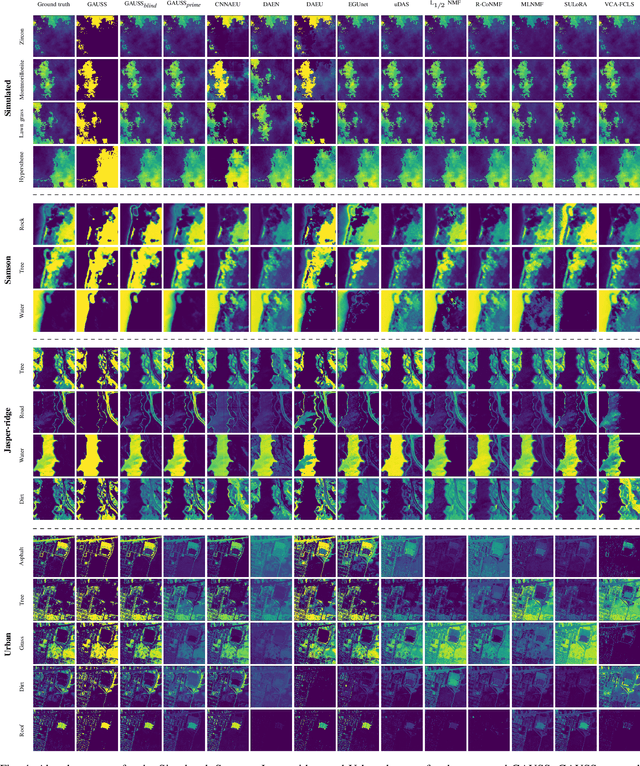Kavinga Weerasooriya
GAUSS: Guided Encoder-Decoder Architecture for Hyperspectral Unmixing with Spatial Smoothness
Apr 16, 2022



Abstract:In recent hyperspectral unmixing (HU) literature, the application of deep learning (DL) has become more prominent, especially with the autoencoder (AE) architecture. We propose a split architecture and use a pseudo-ground truth for abundances to guide the `unmixing network' (UN) optimization. Preceding the UN, an `approximation network' (AN) is proposed, which will improve the association between the centre pixel and its neighbourhood. Hence, it will accentuate spatial correlation in the abundances as its output is the input to the UN and the reference for the `mixing network' (MN). In the Guided Encoder-Decoder Architecture for Hyperspectral Unmixing with Spatial Smoothness (GAUSS), we proposed using one-hot encoded abundances as the pseudo-ground truth to guide the UN; computed using the k-means algorithm to exclude the use of prior HU methods. Furthermore, we release the single-layer constraint on MN by introducing the UN generated abundances in contrast to the standard AE for HU. Secondly, we experimented with two modifications on the pre-trained network using the GAUSS method. In GAUSS$_\textit{blind}$, we have concatenated the UN and the MN to back-propagate the reconstruction error gradients to the encoder. Then, in the GAUSS$_\textit{prime}$, abundance results of a signal processing (SP) method with reliable abundance results were used as the pseudo-ground truth with the GAUSS architecture. According to quantitative and graphical results for four experimental datasets, the three architectures either transcended or equated the performance of existing HU algorithms from both DL and SP domains.
Convolutional Autoencoder for Blind Hyperspectral Image Unmixing
Nov 18, 2020



Abstract:In the remote sensing context spectral unmixing is a technique to decompose a mixed pixel into two fundamental representatives: endmembers and abundances. In this paper, a novel architecture is proposed to perform blind unmixing on hyperspectral images. The proposed architecture consists of convolutional layers followed by an autoencoder. The encoder transforms the feature space produced through convolutional layers to a latent space representation. Then, from these latent characteristics the decoder reconstructs the roll-out image of the monochrome image which is at the input of the architecture; and each single-band image is fed sequentially. Experimental results on real hyperspectral data concludes that the proposed algorithm outperforms existing unmixing methods at abundance estimation and generates competitive results for endmember extraction with RMSE and SAD as the metrics, respectively.
 Add to Chrome
Add to Chrome Add to Firefox
Add to Firefox Add to Edge
Add to Edge